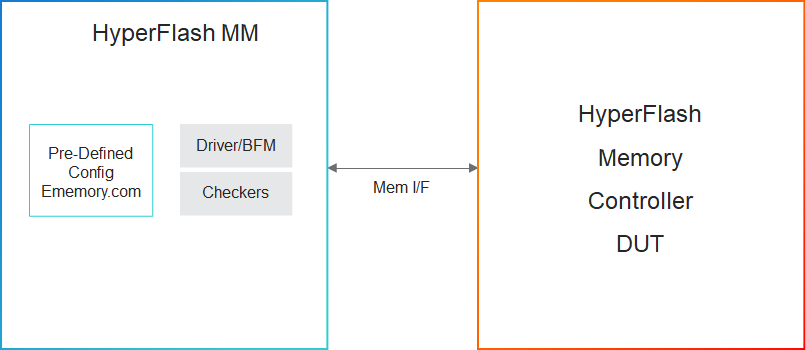Overview
Gold standard for Hyperflash memory device for your IP, SoC, and system-level design verification.
Hyperflash in production since 2018 for many production designs.
The Cadence® Memory Model Verification IP (VIP) for HyperFlash provides verification of HyperFlash Controller using the HyperBus protocol. It provides a mature, highly capable compliance verification solution applicable to intellectual property (IP), system-on-chip (SoC), and system-level verification. The VIP for HyperFlash is compatible with the industry-standard Universal Verification Methodology (UVM), runs on all leading simulators, and leverages the industry-standard Cadence Memory Model core architecture, interface, and use model.
Supported specification: Features of Cypress specification Document Number: 001-99198 Rev. *H Revised February 06, 2017.

Product Highlights
Key Features
The following table describes key features from the specifications that are implemented in the VIP:
Feature Name |
Description |
|---|---|
Density |
|
General Functionality |
|
Burst |
|
Reset Output Pin Functionality |
|
Master Your Tools
Tutorials, Documentation, and Local Experts
Cadence Online Support
Increase your efficiency in using Cadence Verification IP with online trainings, VIP Portal, application notes, and troubleshooting articles